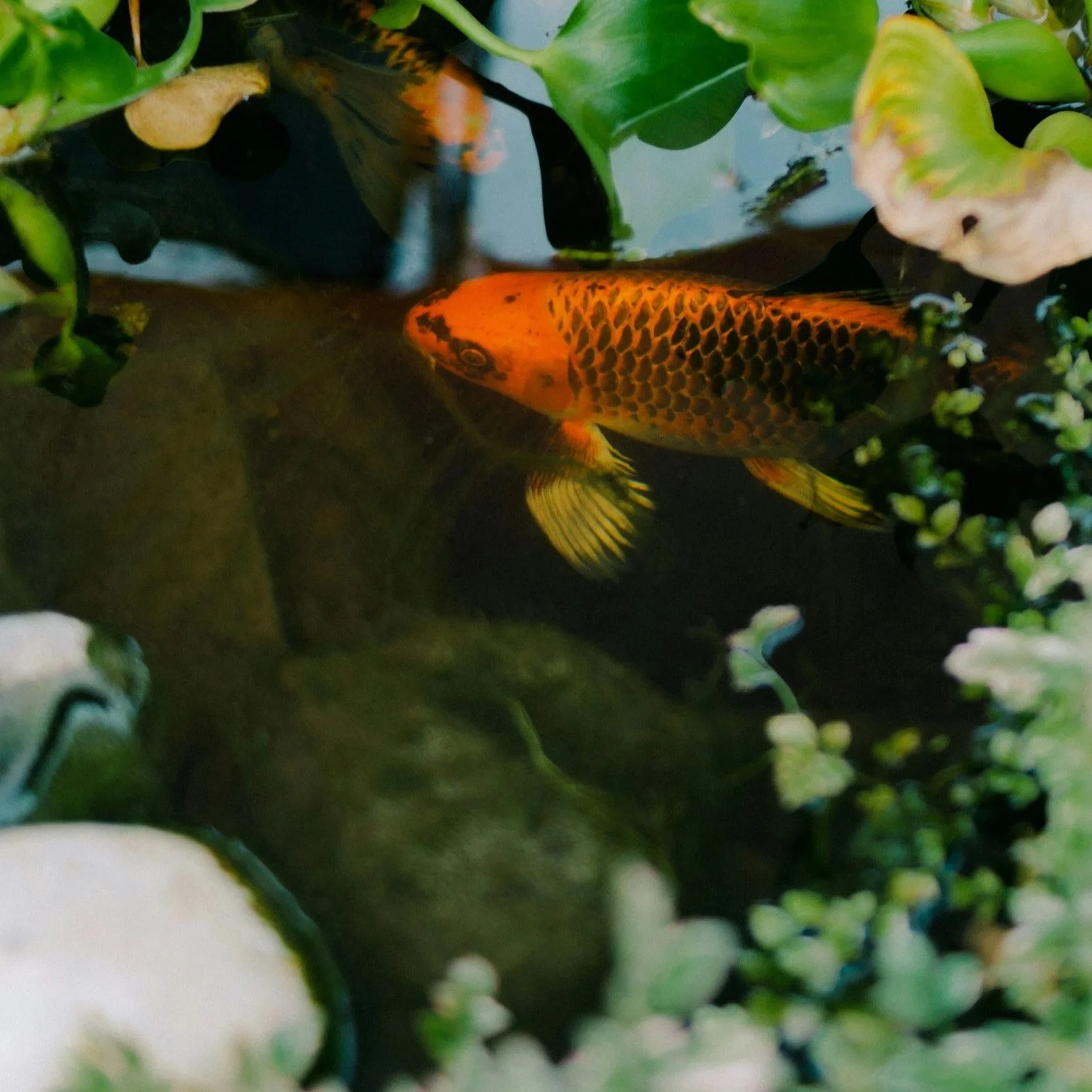How Robert Uses PP to Support Koi Health
As fall arrives, koi keepers start preparing their ponds for the cooler months ahead. Temperatures drop, feeding slows, and pond ecosystems begin to shift. At Robert’s Koi Farm, one important part of fall prep is a careful Potassium Permanganate (PP) treatment.
Used properly, PP can support koi health, reduce parasites, and improve water clarity—helping fish enter winter stronger and stress-free.
This post explains how and why Robert includes PP as part of his fall routine—not as advice, but to share what works in his own koi systems.
Why Use Potassium Permanganate in Fall?
Each fall & spring, Robert uses PP to “reset” his ponds and quarantine systems. It gives koi a cleaner environment before their metabolism slows and winter sets in.
Potassium Permanganate can:
Reduce external parasites like Costia, Trichodina, & Flukes
Break down organic waste and excess DOCs (dissolved organics)
Support recovery after a busy summer of feeding and handling
Improve clarity and oxygenation as microbial loads shift
By using it in fall, koi enter winter with fewer irritants and lower stress—key for avoiding illness when temperatures drop.
Robert’s Fall PP Dosing Routine
⚠️ This is what Robert does in his own ponds. It’s shared for educational purposes only. Every pond is different.
Stop feeding for the day of treatment
Always know you pond water volume before treating. PP treatment 5,000 USA gallons 60 grams PP
Clean filters before treating with PP. Remove leaves and organic debris.
Ensure KH is between 100–150 ppm. Low KH can lead to pH crash, stressing or killing koi.
Dose carefully:
3 treatments every 3-4 days
Robert typically uses a 3 mg/L (3 ppm) dose in clean systems
For 1000 gallons (~3800L), that’s about 11.4 grams of PP (confirm with scale)
PP is always fully dissolved in warm water applying.
Using this ceramic white cup to monitor the PP strength make sure it stays Pinky purple for min 4 to 6 hours
Apply slowly, distributing around the pond edge while strong aeration runs.
Watch fish closely for signs of distress
Monitor water color—bright purple fading to brown over 4–6 hours
Neutralize 3rd and final treatment with hydrogen peroxide. Neutralize 1st & 2nd treatment with hydrogen peroxide - only if needed, (Robert rarely does this)
Add 1 pint of 3% hydrogen peroxide per 1,000 gallons.
This safely clears leftover oxidized matter and helps return water to normal.
The same day of final treatment Robert adds one lb of salt per 100 gallons 3 consecutive days to bring the pond water up to 3ppm salt. For his show pond that equates to (1) 44lb bag of pure salt each day for three days for a total (3) 44 lb salt bags. Salt helps protect koi’s slime coat and offers added support as the weather cools.
Once the treatment is complete, a partial water change may be done the next day, depending on conditions.
Why It Works for Fall
Fish are still active enough to tolerate treatment safely
It gives koi a clean environment before immune systems slow down
Any parasites or organics lingering after summer are reduced
It’s easier to treat before the water gets cold
Fall PP dosing is not about fixing problems—it’s about staying ahead of them.
A Word of Caution
PP is a strong chemical. It can harm fish, plants, or filters if misused. Robert does not use it routinely—only when needed, and never in ponds with delicate life (plants, frogs, snails).
He always confirms exact pond volume, has strong aeration, and is fully present during the treatment.
Robert’s Reminder
💬 “Every pond is different, and PP is not something to use casually. But used with care, at the right time, it can really help your koi head into winter strong.”
— Robert
📍 Robert’s Koi Farm – Fort Langley, BC
Healthy koi raised in natural clay mud ponds.
📦 Shipping available across Canada
Disclaimer
This blog is for educational purposes only. Robert shares what he does in his own ponds based on experience and observation. This is not medical or professional advice. Always research thoroughly, understand the risks, and seek expert input before using any treatment.
Use PP at your own risk and always with care.



